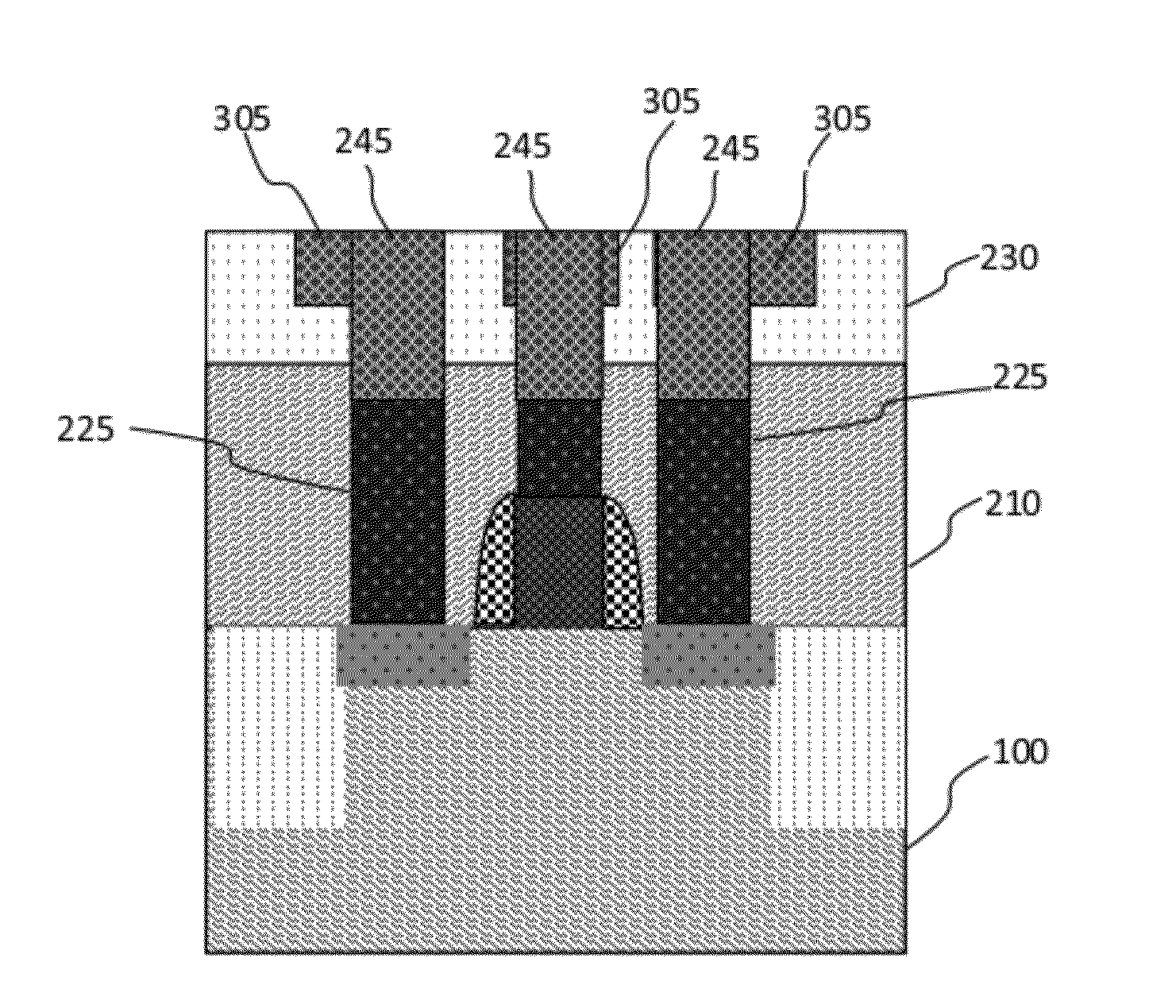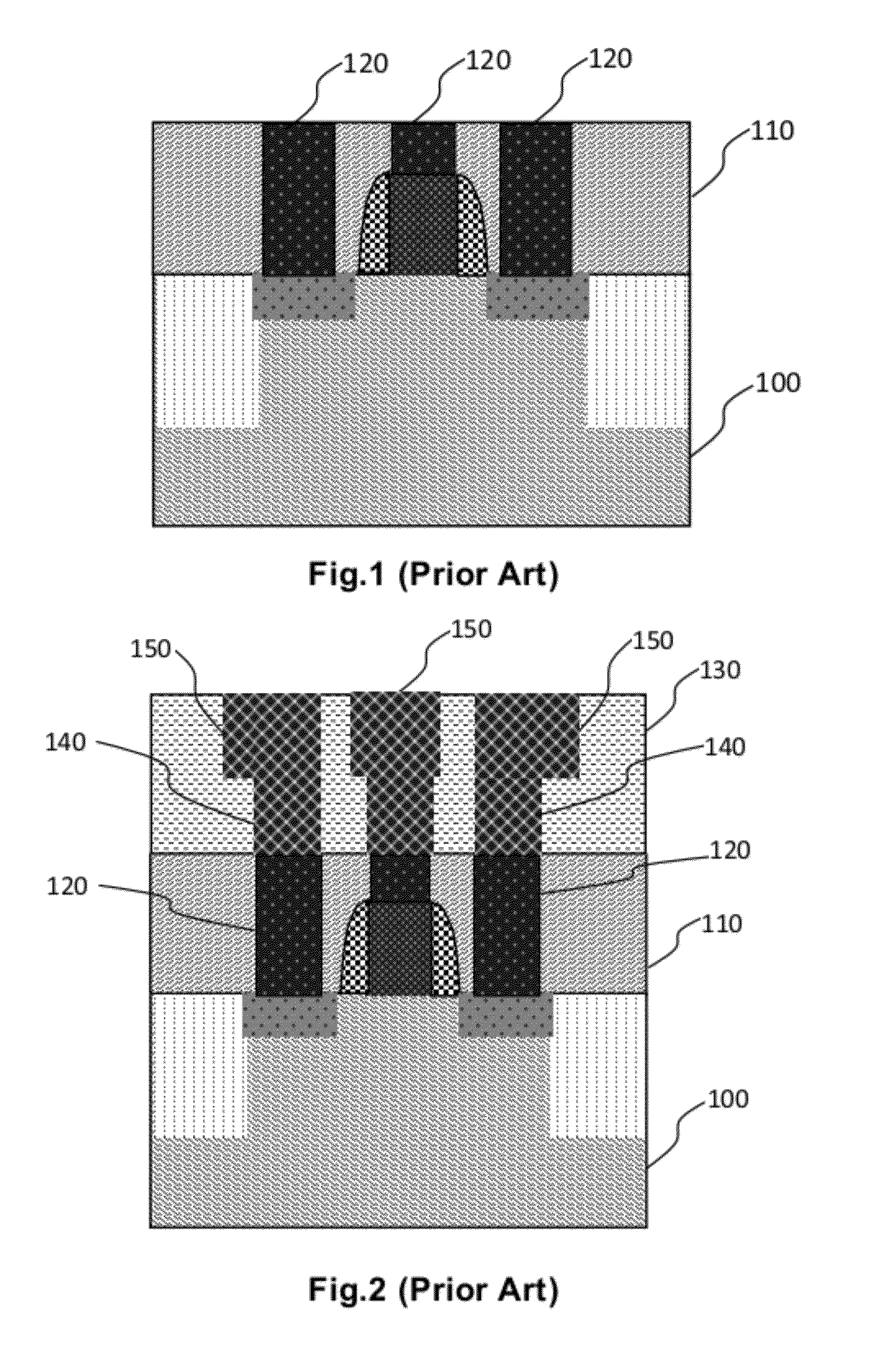Semiconductor device and manufacturing method thereof
- Summary
- Abstract
- Description
- Claims
- Application Information
AI Technical Summary
Benefits of technology
Problems solved by technology
Method used
Image
Examples
Embodiment Construction
[0051]A method for manufacturing a semiconductor device according to one embodiment of the present invention and the semiconductor device manufactured thereby will be described in detail with reference to the drawings.
[0052]As shown in FIG. 3, a structure 101 comprising an interlayer dielectric layer (hereinafter abbreviated as “ILD”) 210, an ultra-low-k material layer (hereinafter abbreviated as “ULK”) 230 and a plug 220 is formed. Ultra-low-k dielectrics are defined as having a dielectric constant k of 2.7 or less.
[0053]ULK 230 is disposed on ILD 210, and ILD 210 is disposed on a substrate 100. The materials of ULK 230 and ILD 210 are known by one of ordinary skill in the relevant art. For example, ILD 210 can be formed of silicon oxide, and ULK 230 can be formed of porous SiCOH or porous macromolecule materials.
[0054]In one embodiment, a first cap layer 260 may be formed on ULK 230, so as to prevent ULK 230 from being damaged during a subsequent chemical mechanical polishing proc...
PUM
 Login to View More
Login to View More Abstract
Description
Claims
Application Information
 Login to View More
Login to View More - R&D
- Intellectual Property
- Life Sciences
- Materials
- Tech Scout
- Unparalleled Data Quality
- Higher Quality Content
- 60% Fewer Hallucinations
Browse by: Latest US Patents, China's latest patents, Technical Efficacy Thesaurus, Application Domain, Technology Topic, Popular Technical Reports.
© 2025 PatSnap. All rights reserved.Legal|Privacy policy|Modern Slavery Act Transparency Statement|Sitemap|About US| Contact US: help@patsnap.com



